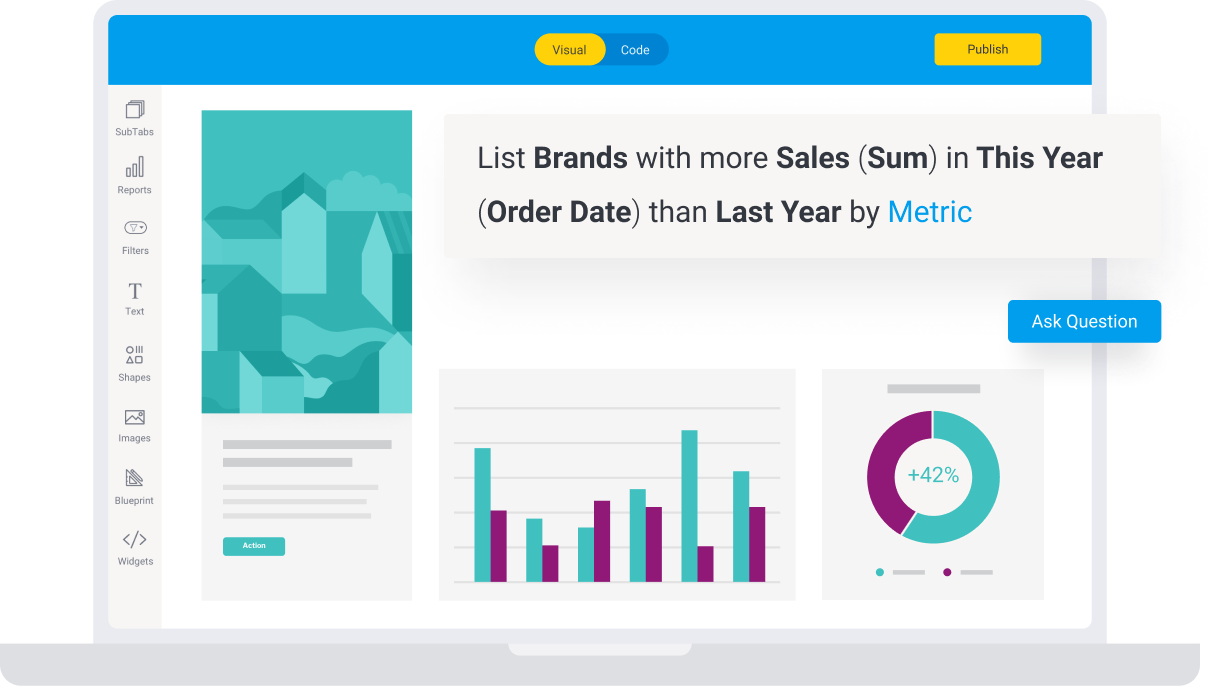Glossary
Data discovery
Data discovery, also known as assisted discovery, refers to the capability of a business intelligence platform to collect data from relevant sources, help end-users explore data to identify changes, outliers and trends, and guide end-users toward relevant business information. This is achieved through the use use of visual-based tools and advanced analytical features.

What does data discovery do?
An analytics solution with data discovery capability allows non-technical end-users to perform a range of analytical tasks, such as provisioning dashboards, consuming reports, blending data from various sources and applying predictive models, without the need for significant expertise in analytics processes or IT help.
Data discovery takes many forms depending on the BI solution, but most are represented through drag-and-drop interfaces which enable visual-based data exploration, simplified preparation, and even automated analysis to make the end-to-end analysis process as simplified as possible.
For example, Yellowfin’s data discovery capability is made up of a number of advanced, self-service tools that allow end-users of all skill levels to better understand their data business, explore data, discover patterns and outliers, and share insights with others, including, but not limited to:
– Automated business monitoring
– Guided natural language query